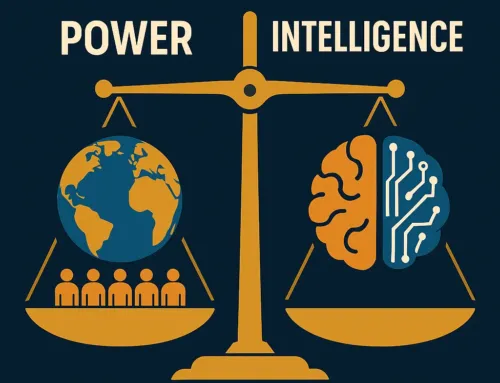
Approx. read time: 5.3 min.
Post: The Statistical Research Group: Abraham Wald and the Mathematics That Shaped WWII
The Statistical Research Group (SRG): Mathematics’ Hidden Role in World War II
The Statistical Research Group (SRG) was one of the most extraordinary wartime efforts in history, a classified program that brought together the brightest minds in mathematics and statistics to tackle some of the most pressing challenges of World War II. Operating out of a modest building at 401 West 118th Street in Manhattan, just a block from Columbia University, the SRG was, in many ways, a mathematical equivalent of the Manhattan Project. Instead of building bombs, however, they were crafting equations—a different kind of weapon that proved no less essential to the Allied victory.
A Buzzing Nerve Center of Wartime Mathematics
In 1943, the SRG’s home in Morningside Heights housed a confluence of groundbreaking ideas. The atmosphere was electric, combining the intensity of an academic department with the high stakes of a war effort. Nearby, at the Applied Mathematics Group-Columbia, young women worked tirelessly on Marchant desktop calculators to determine the optimal flight paths for fighter planes. Meanwhile, another group from Princeton developed protocols for strategic bombing.
At the heart of this activity was the SRG, led by W. Allen Wallis. The SRG gathered an unprecedented assembly of statisticians and mathematicians, including luminaries such as Frederick Mosteller, Leonard Jimmie Saavage, and Norbert Wiener. Milton Friedman, who would later win the Nobel Prize in Economics, often found himself surrounded by others even more brilliant. Yet, the brightest mind in the room was usually Abraham Wald, a mathematician whose insights became legendary.
Abraham Wald: The Genius Behind the Numbers
Wald’s intellectual brilliance and mathematical rigor made him an invaluable asset to the SRG. Ironically, as an “enemy alien” due to his Hungarian origins, Wald was technically barred from accessing the classified reports he generated. This restriction became a running joke within the group, with secretaries whisking away his notes as soon as he finished writing.
Despite his natural inclination toward abstraction, Wald’s contributions were rooted in practical applications. His mathematical insights saved countless lives, and one of his most famous solutions exemplified his genius and the transformative power of statistical thinking.
The Bullet Hole Problem: A Lesson in Survivorship Bias
One of the SRG’s pivotal challenges involved optimizing the armor on American bombers. Armoring planes too heavily made them slower and less maneuverable, while insufficient armor left them vulnerable to enemy fire. The military provided the SRG with data showing where returning planes were most frequently hit:
| Section of Plane | Bullet Holes per Square Foot |
|---|---|
| Engine | 1.11 |
| Fuselage | 1.73 |
| Fuel System | 1.55 |
| Rest of the Plane | 1.80 |
The initial assumption was straightforward: reinforce the areas with the most bullet holes. However, Wald’s analysis flipped this assumption on its head.
Wald argued that the data represented only the planes that had survived their missions. The damage patterns on these planes indicated the areas where hits could be tolerated. The missing data—the bullet holes on planes that never returned—was the key. Planes hit in the engine were far less likely to survive and return, meaning these areas needed additional armor.
By recognizing this survivorship bias, Wald’s recommendation to armor the engines rather than the fuselage directly contributed to the survival of more planes and pilots. His work was a triumph of statistical reasoning, demonstrating how careful analysis could uncover hidden truths.
The Broader Implications of Wald’s Insight
The concept of survivorship bias, which Wald so effectively leveraged, extends far beyond military applications. It appears in fields ranging from finance to medicine and education, often obscuring our understanding of success and failure. For example, studies of mutual fund performance often focus only on surviving funds, ignoring those that have closed. This skews results, creating an overly optimistic picture of returns. A 2006 study revealed that when defunct funds were included, the average rate of return dropped significantly.
Similarly, survivorship bias can distort evaluations in medicine. Treatments that appear effective based on survivor data may overlook patients who did not survive long enough to receive the treatment. Wald’s work underscores the importance of identifying and addressing these biases to ensure accurate conclusions.
The SRG’s Legacy
The Statistical Research Group’s contributions to the war effort extended far beyond Wald’s bullet hole analysis. The team’s work influenced strategic decisions across multiple theaters of war. Jack Wolfowitz, another SRG member, optimized ammunition mixtures for fighter planes. While Abe Girshick developed sampling-inspection plans to ensure the reliability of Navy rockets. These efforts reflected the SRG’s unique combination of theoretical brilliance and practical application.
Wald’s methods and insights continued to shape military strategy for decades, influencing operations in Korea and Vietnam. The SRG’s success demonstrated the value of interdisciplinary collaboration and the transformative power of data-driven decision-making.
Mathematics: The Silent Partner in Victory
The SRG’s story highlights a broader truth about warfare: the outcomes of battles often hinge on marginal advantages. A small improvement in survival rates, fuel efficiency, or logistical planning can have an outsized impact on the overall war effort. While these contributions lack the drama of battlefield heroics, they are no less critical to victory.
Mathematics and statistics played a central role in securing these advantages. The SRG’s work exemplifies how abstract concepts can yield concrete benefits, saving lives and shaping the course of history.
Conclusion
The Statistical Research Group was a testament to the power of mathematics and collaboration. Abraham Wald’s insights into survivorship bias not only revolutionized military strategy but also provided a framework for addressing similar challenges across diverse fields. The SRG’s work reminds us that even in the most dire circumstances, the careful application of logic and reason can illuminate the path forward.
Today, the building that housed the SRG stands as a quiet relic of a time when mathematics helped turn the tide of history. The lessons learned there continue to resonate. Proving that equations can be as powerful as explosives when wielded with precision and insight.









